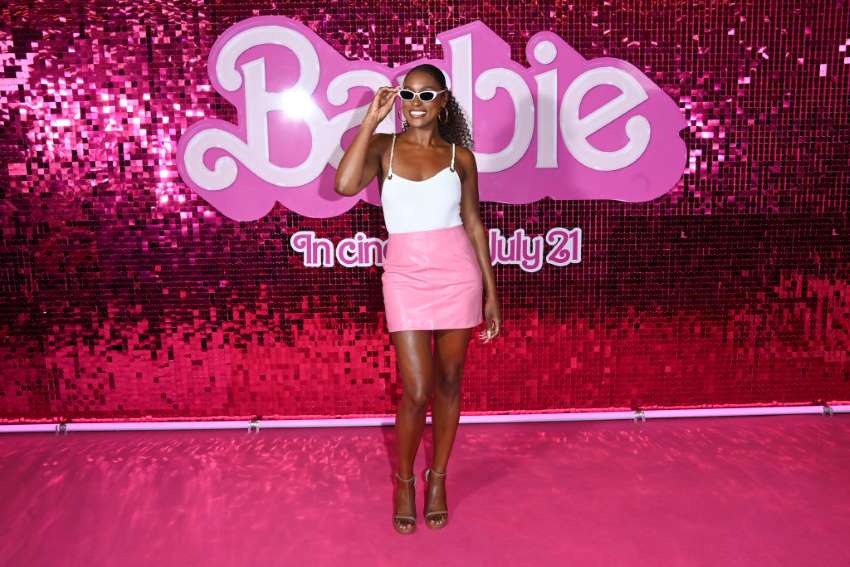I REMEMBER that day at the toy shop as if it were yesterday. Excited to find a new doll to be my playmate, I walked in with wide eyes and a hopeful heart.
But as I scanned the shelves, I couldn’t help but notice a sea of white Barbies, their blonde hair and fair complexions filling every corner. Not a single black doll in sight.
The impact on me was immense, and a feeling of invisibility washed over me. I went home with a heavy heart, and as I stared at my reflection in the mirror, I found myself questioning who I truly was.
My curly hair, my brown skin – did they not belong in the world of beauty and play? Who am I, and where do I fit in?

The iconic Barbie doll, with her blonde hair, blue eyes, and slender figure, has long been the embodiment of Western beauty standards.
However, as society evolves, the outdated stereotype of whiteness being the epitome of perfection and beauty is being challenged.
It delves into the impact of the white Barbie on black children, the early doll’s drenched misogyny, and the refreshing embrace of diversity in the movie, symbolising a brand looking to move forward.
For generations, the white, blonde Barbie has been marketed as the epitome of beauty and perfection. This portrayal perpetuates the harmful stereotype that whiteness is the standard to aspire to, while other racial identities are marginalised and underrepresented.
This messaging has profound psychological effects on black children, as they grow up internalising a sense of self-hate and low self-esteem.
By subconsciously accepting that they do not fit the mould of the ‘ideal’ Barbie, they are left feeling inadequate and unattractive.
The Barbie movie serves as a platform for a previous generation to realise and confront their own tropes and hang-ups. The film acknowledges the damage caused by perpetuating the outdated white Barbie stereotype and presents an existential crisis for the brand.
It symbolises a crucial moment of introspection, where the creators of Barbie seek to address the negative impact of their past representation and redefine their narrative for the future.

Beyond racial stereotypes, the early Barbie doll was drenched in misogyny. The first Barbie, introduced in 1959, was marketed as a fashion model with a wardrobe of stylish clothes, reinforcing the idea that a woman’s value lies primarily in her appearance.
The doll’s limited range of ‘skills’ focused on beauty and fashion, effectively promoting the notion that women were solely meant to be decorative objects rather than individuals with diverse talents and abilities.
Contrasting with its problematic past, the Barbie movie takes a transformative approach by empowering female characters with depth and diverse talents.
This artistic declaration shifts the narrative from a shallow and one-dimensional portrayal of femininity to a celebration of female strength, intelligence, and ambition.
The movie’s portrayal of characters exploring their passions, pursuing their dreams, and breaking societal barriers serves as a powerful message for young audiences, inspiring them to reach their full potential irrespective of their gender.
One of the most commendable aspects of the Barbie movie is its embrace of diversity. Breaking away from the monolithic image of the white Barbie, the film features characters of various racial backgrounds, body types, and identities.

By incorporating diverse representations, the movie makes a genuine artistic declaration that beauty and worthiness are not confined to a single stereotype.
This inclusivity celebrates the richness of human diversity and fosters a sense of belonging and acceptance for audiences of all backgrounds.
The Barbie movie stands as a testament to the evolving societal norms and the desire for progress in representation and inclusivity.
It boldly confronts the harmful stereotypes perpetuated by the white Barbie, acknowledges the past misogyny present in the early doll, and embraces diversity as a true artistic declaration.
Through empowering female characters and meaningful storytelling, the movie strives to uplift and inspire a new generation to redefine beauty, challenge stereotypes, and embrace their uniqueness.
As we continue to navigate the complexities of representation and self-identity, the Barbie movie serves as a reminder that we have the power to reshape narratives and inspire positive change in the world.


Comments Form
3 Comments
Caucasian toymakers made Barbie to resemble the architype image of their Western European Princess-like daughters.
The non-Caucasian people failed to make toys which resembled their children.
Should Caucasian people be penalised for making Barbie widely successful?
I am sure that if you look in a toy store in Haiti, or Nigeria, or DRC, the dolls will have the skin tones of the majority population. I can’t imagine white children living there and entering such a toy shop would feel “invisible”.
“For generations, the white, blonde Barbie has been marketed as the epitome of beauty and perfection … This messaging has profound psychological effects on black children, as they grow up internalising a sense of self-hate and low self-esteem.”
That’s a bit far fetched! Barbie was a single character – a doll. There was only one of her, and like most human beings, she could only be a single ethnicity. Are you seriously suggesting that all black children took one look at her, and “internalised a sense of self-hate”? I think it’s more likely they either wanted to play with her, or moved onto a toy which was more interesting. I don’t believe anyone burst into tears and began hating themselves. That’s only what a few aggrieved adults have done a few decades on.